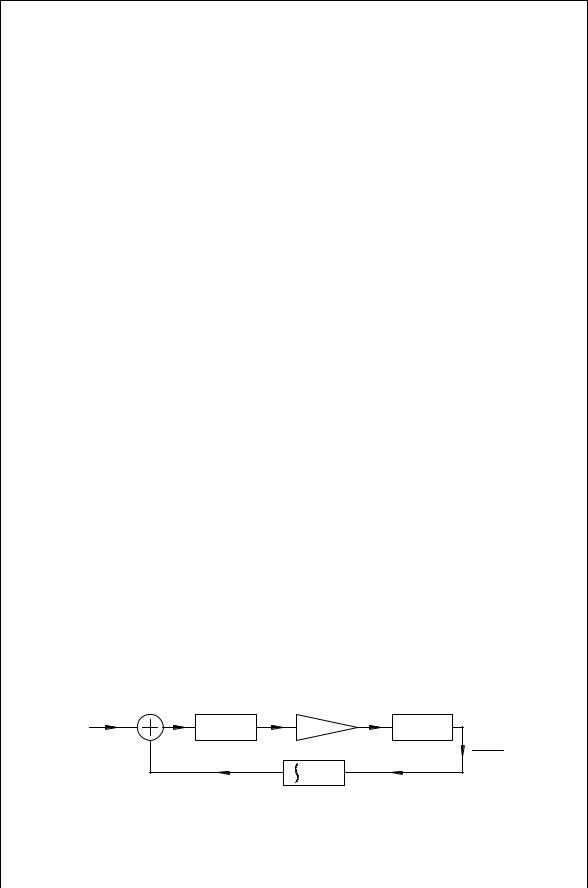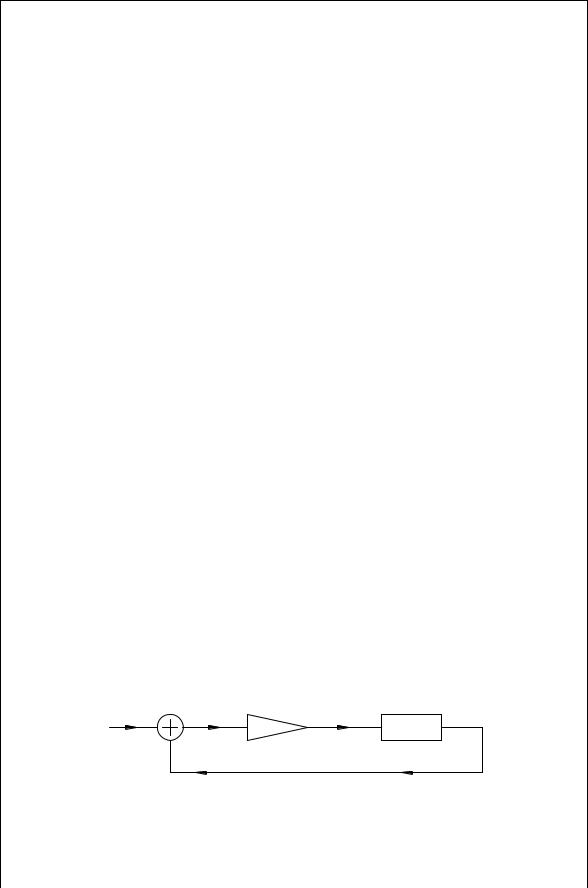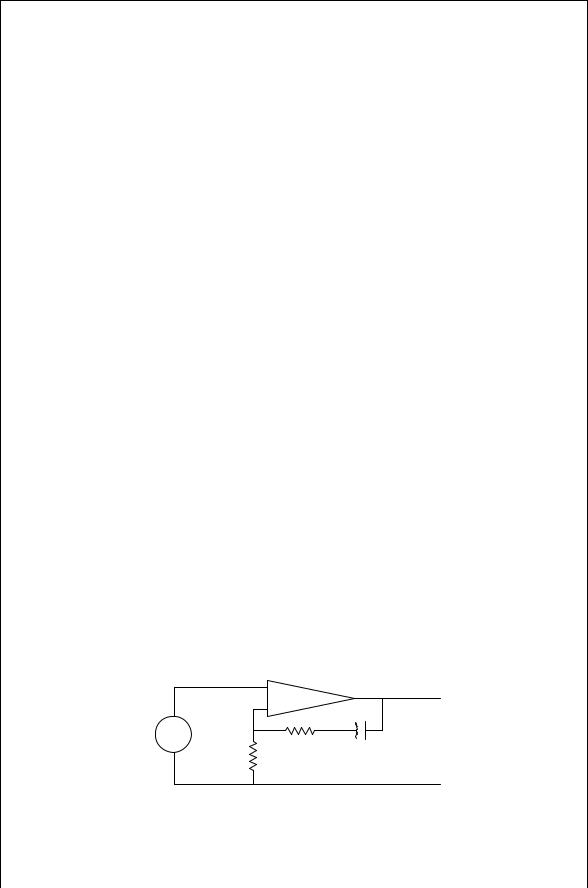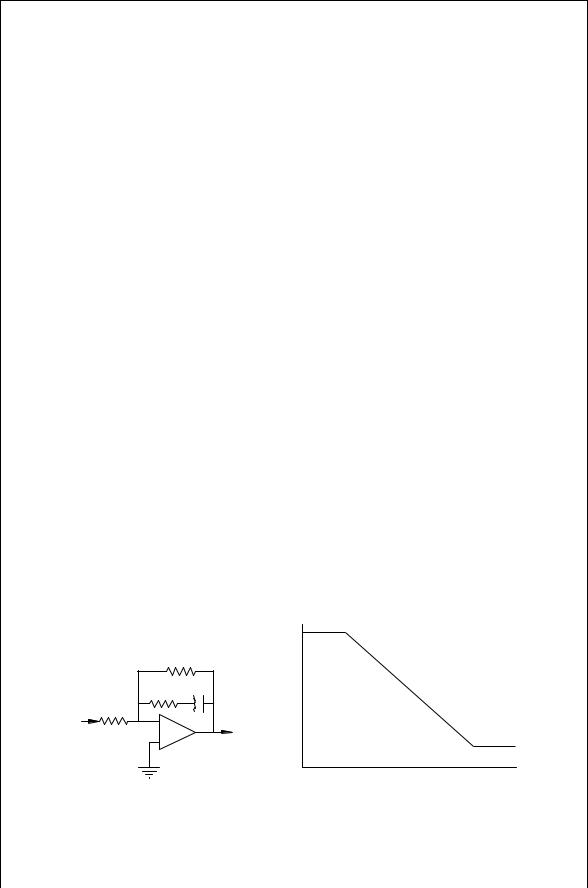
Davis W.A.Radio frequency circuit design.2001
.pdf
250 PHASE LOCK LOOPS
Frequency is the time rate of change of phase, so phase is the time integral of frequency. Consequently, if the frequency of the VCO is proportional to the tuning voltage, the output phase is proportional to the integral of tuning voltage. The output frequency can range from a few Hertz to many GHz. The VCO output becomes the second input to the phase detector.
When the loop is first turned on, the VCO frequency is not controlled. The loop filter output voltage can be anywhere between the high and low limits set by the power supply. However, the phase detector produces an error voltage that is the difference between the VCO frequency and the reference frequency. Like the cruise control example, this signal tells the loop filter whether the VCO is going too fast or too slow relative to the reference frequency. The loop filter is “smart enough” to know what to do. If the error signal indicates that the VCO frequency is less than the reference, the loop filter adjusts the control voltage to raise the VCO frequency. If the VCO frequency is too high, the loop filter changes the voltage and lowers the VCO frequency. The loop filter design sets how fast this happens. Some loops may be designed for a fast bumpy ride, while others may require a slow smooth ride. When the loop filter has done its job, the VCO frequency will exactly match the reference frequency, and the two inputs will have a constant phase difference. This match in frequency and constant phase difference will be maintained even if the reference frequency changes. With each change, the PLL again goes through the settling out process. If the reference is noisy, the PLL is in a continual state of change, working hard to follow the input. If a PLL were nothing more than a box with the same frequency in and out, it would not be much of an invention. Happily there is a lot more to it than that. Before preceding any farther, the basic idea of the frequency control by a closed loop operation must be clarified.
12.5LOOP DESIGN PRINCIPLES
There are many design rules that go into a successful, stable closed loop design, but many of these details are beyond the scope of his text. However, this discussion will lead to an understanding of how the loop works and how to select parts to customize its operation. From the overall system point of view, the PLL designer must know the overall requirements and be able to translate these requirements into the PLL parameters for the design.
With a PLL, the important top-level parameters are the input and output frequency, the response time, the loop bandwidth and the loop damping ratio. The top-level view concentrates on these system level values. The detailed aspects of the phase detector and VCO must be considered. These are usually highfrequency parts requiring high-frequency design techniques. The design of the loop filter requires an understanding of analog design techniques. Figure 12.2 illustrates the PLL block diagram, which includes a frequency divider in the feedback path. Both frequencies coming into the phase detector must be the locked together at the same frequency. This will force the output frequency,
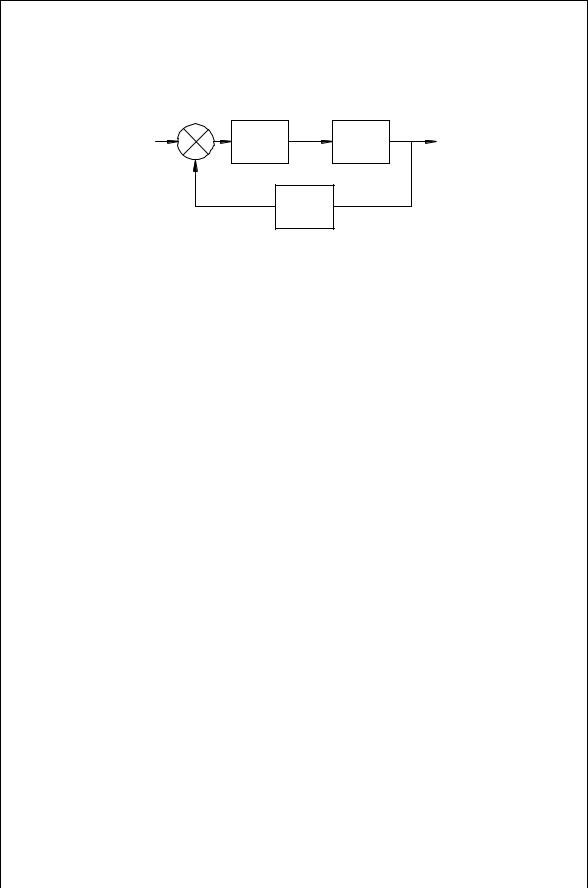
|
|
|
PLL COMPONENTS |
251 |
|
Phase |
|
|
|
|
Detector |
|
|
|
fref |
Loop |
VCO |
fout |
|
Filter |
|
|||
|
|
|
|
Divide
by N
FIGURE 12.2 Phase lock loop with a frequency divider.
fout, to be N times the reference frequency, fref. Familiarity with digital circuit design is required to complete the design. A PLL design is not just a system design nor an RF design nor an analog design, but it is a combination of all these areas. The actual design process can be summarized by three principles.
1.Know each component. The components of a PLL, the VCO, phase detector, loop filter, and frequency divider must be thoroughly understood and tested as stand-alone individual components. Testing of the actual parts must show that they each meet the design goals. These tests may extend far beyond the information on the manufacturer’s data sheet.
2.Test the components together. The individual components must work correctly when connected together in an open loop configuration. The loop filter must put out enough voltage to drive the VCO. The VCO must have enough output to drive the frequency divider. The phase detector output must be large enough for the loop filter to use. An open loop analysis must show the correct phase margin and bandwidth for stability. These issues are resolved with an open loop analysis.
3.Compare the closed loop configuration to the design goals. A closed loop analysis should show that the final connection matches the system level design goals. Both test measurement techniques and analysis can be applied for PLL design verification.
12.6PLL COMPONENTS
The basic building blocks, except in exotic applications, are those shown in Fig. 12.2. This section describes in greater depth each of these functions.
12.6.1Phase Detectors
Phase detectors come in many configurations. These include those with logic level inputs, passive and active analog versions, and sampling versions used for highfrequency multiplication. In addition there are phase detectors with automatic

252 PHASE LOCK LOOPS
frequency search features to aid in initial frequency acquisition. In its simplest form, a phase detector is a frequency mixer. As described in Chapter 11, when two signals come into the mixer, the output consists primarily in the sum and difference frequencies. The sum frequency is filtered out by the loop filter. The difference frequency, historically called the beat note, is typically a few kHz or less in a PLL. If the two input frequencies are exactly the same, the phase detector output is the phase difference between the two inputs. This loop error signal is filtered and used to control the VCO frequency. The two input signals can be represented by sine waves:
V1 |
D Va sin ω1t C 1 |
12.1 |
V2 |
D Vb sin ω2t C 2 |
12.2 |
The difference frequency term is the error voltage given as
Ve D Km Ð V1 Ð V2 D |
KmVaVb |
cos[ ω1 ω2 t C 1 2 ] |
12.3 |
2 |
where Km is a constant describing the conversion loss of the mixer. Equation (12.3) gives the time-varying cosine waveform at the beat note frequency. When the two frequencies are identical, the output voltage is a function of the phase difference, D 1 2:
Ve D |
KmVaVb |
cos |
12.4 |
2 |
This is maximum when D 0°, a minimum when D 180°, and zero whenD 90° or 270° (Fig. 12.3).
When modeling a PLL in the frequency domain, the phase detector can be
modeled as |
|
a |
|
|
Kpd |
12.5 |
|
|
|
||
|
a C s |
which at low frequencies is simply the slope of the voltage with relation to the phase curve. The units for Kpd is volts/rad:
Kpd D |
dVe |
D |
KmVaVb |
sin |
12.6 |
d |
2 |
Thus Kpd D 0 when D 0° or 180° and a maximum absolute value at D 90° or 270°.
12.6.2Voltage-Controlled Oscillator
The voltage-controlled oscillator is the control element for a PLL in which the output frequency changes monotonically with the tuning voltage. A linear
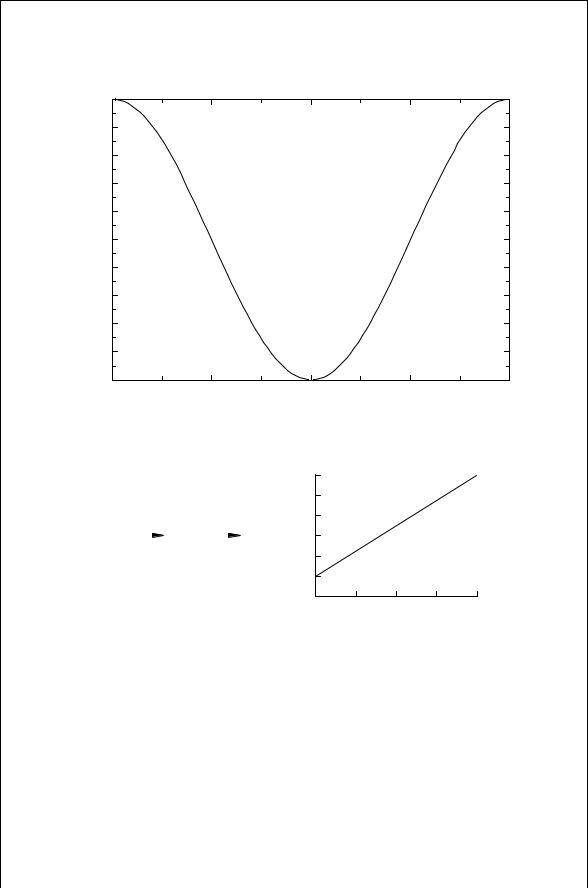
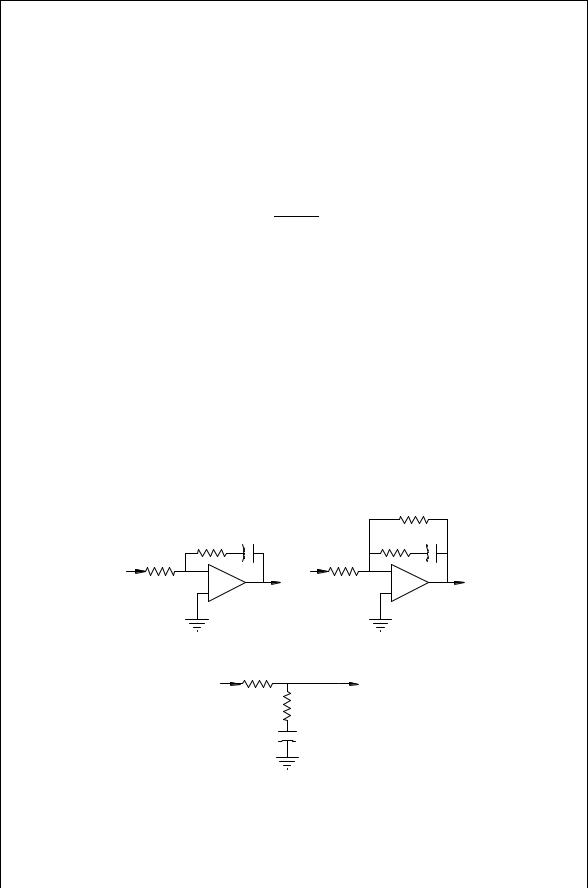

LINEAR ANALYSIS OF THE PLL [1] |
255 |
closed loop operation. The wrong design will make the loop unstable causing oscillation or so slow that it is unusable. The loop filters shown in Fig. 12.5 are modeled by
F s |
|
s C a |
12.10 |
|
D sn s C b s C c |
||||
|
|
|||
where a is a zero and b and c are poles.
12.6.4Frequency Dividers
When the output frequency must be a multiple of the input frequency, frequency dividers may be included in a PLL. Most dividers are a digital circuit, although analog techniques dating from 1939 are available for very high frequency devision. With the availability of complete synthesizers on a single IC, fewer standalone divider circuits are on the market. Most dividers have a division ratio equal to a binary number or switchable from a binary to a binary C1 (e.g., divide by 64 or 65). The upper limit on the input frequency is about 3 GHz, although only a few ICs will go that high. Divide by four circuits has been demonstrated with inputs above 14 GHz, but this is a very specialized device not required by most PLLs. For a linear analysis when the loop bandwidth is much less than the reference frequency, dividers are modeled as a gain element with a value D 1/N.
12.7LINEAR ANALYSIS OF THE PLL [1]†
From the perspective of the time domain, the control voltage for the VCO is
|
|
t |
|
Vtune t D Vtune 0 t C |
0 |
ve t f t d |
12.11 |
where f t is the impulse response of the filter. Now the Laplace transform of f t is
|
|
1 |
|
F s |
D |
f t e stdt, t > 0 |
12.12 |
|
0 |
|
and the inverse transform can be obtained in principle by the contour integral shown below:
1 |
1 |
|
|
f t D |
|
1 F s estds, <s > 0 |
12.13 |
2 i |
|||
† This material is based on A. J. Viterbi, Principles of Coherent Communication, 1966, by permission of the McGraw-Hill Company.
